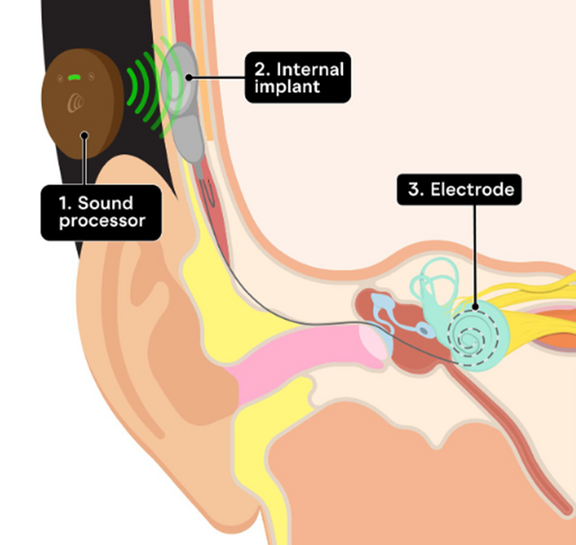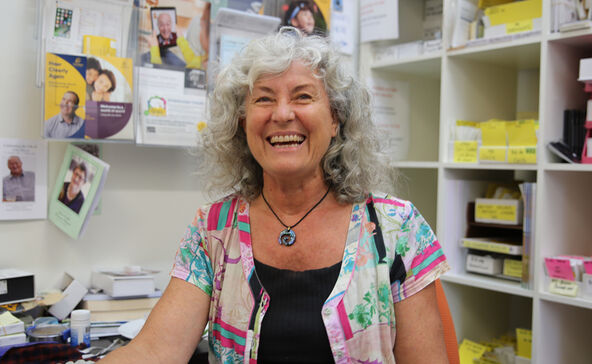- Hearing
Today is International Cochlear Implant Day, and this year marks 40 years since Sue Walters became the first person in NSW—and among the first in Australia—to receive this life-changing innovation.
Sue became profoundly deaf suddenly in her twenties following a bout of meningococcal meningitis. In 1984, she volunteered to be part of an experimental program for multichannel cochlear implants and was implanted by pioneering surgeon Professor Bill Gibson, who led our cochlear implant program for 30 years. This program is now the largest and most comprehensive in Australia.

— SueBeing selected to have this first experimental implant was daunting. But it was exciting too because it was really new, and we didn’t know what the outcome would be.
Cochlear implants stimulate the hearing nerve, known as the cochlea or auditory nerve, to provide access to high-quality, more detailed sound. Unlike hearing aids which amplify sound, cochlear implants provide direct access to the cochlea and bypass the damaged parts of the inner ear.

Before the invention of the multichannel cochlear implant, which stimulated more of the cochlear nerve using an electrode array, scientists were sceptical it would be possible to understand speech or differentiate between sounds with an implant. Sue proved them wrong, becoming the first person in the world who was deaf to make a phone call using a cochlear implant sound processor.
Sue received a second implant in 2005. She now works for NextSense as a clinical support officer and spends her life giving back to others, helping our clients understand and use their cochlear implants.
— SueIf you cannot really get good use of your hearing from a hearing aid, a cochlear implant is a good next step. People do worry about the surgery but it’s a lot simpler and easier than it used to be.
Sue is also the president of CICADA, a national cochlear implant support group, which brings together people who have or are considering implants.
It is estimated that around 15,000 Australians currently have cochlear implants, but there is significant unmet need. Only 10 percent of adults who could benefit from the technology are currently using one. The barriers are varied but lack of awareness about options is one issue, and that's something that Sue is working so hard to address.
